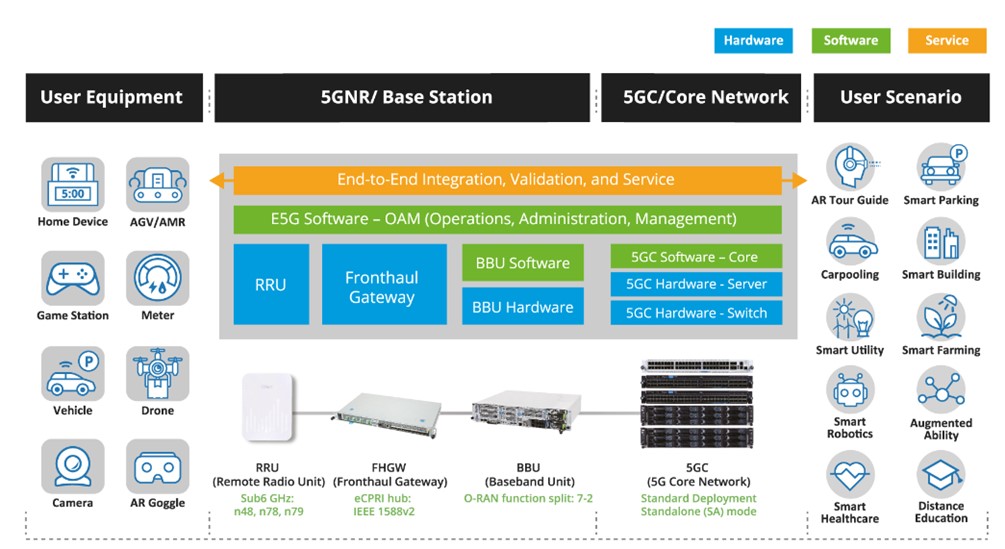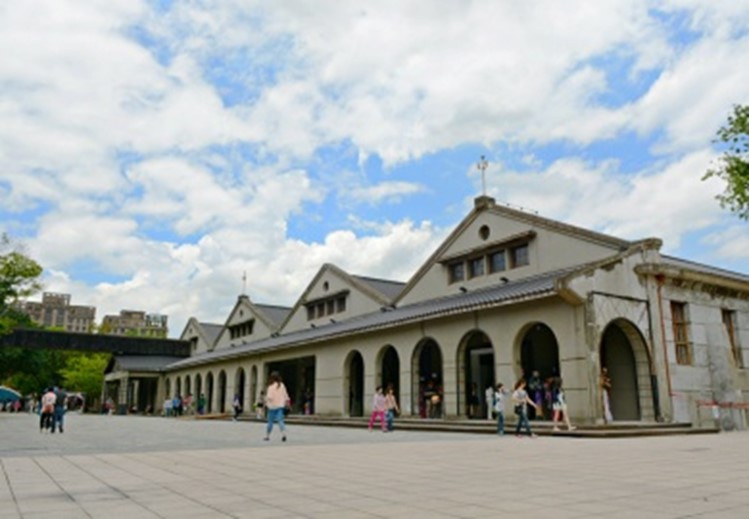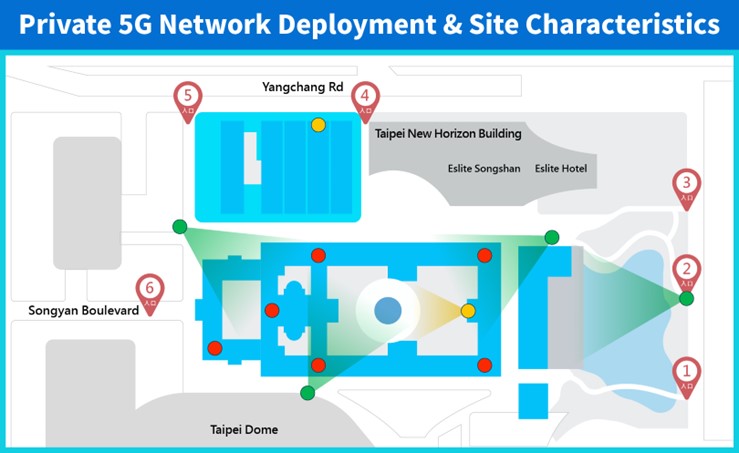Private 5G can help organizations unlock value through new, previously impossible use cases. With its promises of high bandwidth, low latency, and ultra reliable connection it enables rapid data and insight-driven decision-making. This innovation goes beyond connections between people; but also between devices and now places, giving rise to smart venues such as smart factories, smart parks and smart campuses.
QCT, a global data center and end-to-end 5G solution provider, is the first Taiwan-based 5G equipment vendor that manufactures outdoor remote radio units (RRUs) to enable a variety of smart venues around the globe. The company has worked on a smart campus initiative supported by the Future Communications Connectivity Lab in Singapore, airport logistics management in the United States, an AMR equipped smart factory with Panasonic Taiwan, and a local nursing home in Taiwan to enable telemedicine for its residents. For its latest endeavor, QCT is enabling the Songshan Cultural and Creative Park (SSCC), a cultural heritage site and recreational hot spot in Taipei. In July 2023, QCT and Taiwan Mobile Enterprise Service Co. (TWM)., a total solution provider in 5G AIoT applications, announced they would join forces with their ecosystem partners to transform SSCC into Taiwan’s first world-class smart heritage site. This initiative aims to provide seven 5G + AIoT services to visitors from all around the globe. Built on QCT’s end-to-end OmniPOD Enterprise 5G, this comprises a standalone (SA) 5G core, a flexible system configuration for 5G RAN, and a visualized, intuitive network management system.

Pioneering Large Scale Private 5G Deployment in a Cultural Heritage Site
Originally built as a tobacco factory, SSCC occupies nearly six acres of land with a cluster of historic buildings and diverse outdoor spaces including a garden, a large pond and a walkway. QCT’s mission in this project is to continuously deliver stable 5G connections that cover 80% of SSCC, which poses a great challenge to the engineers due to the sheer size and complex composition of this site.

According to the project’s plan, TWM is establishing a “5G Private Network” throughout SSCC, encompassing a 5G core network, base stations, Fixed Wireless Access (FWA), and a 5G intelligent network management system. Additionally, QCT’s private 5G network will support seven 5G + AIoT applications around the park, namely a smart guidance system leveraging service robots and AR devices, an AI smart image monitoring system using body cams and autonomous mobile robots (AMRs), an energy management system, a multi-angle broadcasting service, and a data-driven control room.

To meet the bandwidth and latency requirements of different applications in the most cost-effective manner, QCT and its SI partner conducted a detailed site survey as the project kicked off to come up with a mixed indoor-outdoor deployment plan, which is also the first of its kind in Taiwan. Four outdoor RRUs will be installed at both ends of the main walkway, by the pond, and by the southern tobacco factory to support inspection, guidance and energy management needs. In addition, eight indoor RRUs will be deployed inside the buildings to enable AR guidance, multi-angle broadcasting, and AMRs.

Since SSCC is a cultural heritage site, RRU deployment must abide by relevant preservation regulations. QCT and its SI partner managed to use two wall-mounts and six ceiling-mount indoor RRUs to meet the coverage requirements while minimizing their influence on these buildings. In addition, as this is a mixed indoor-outdoor deployment case, 5G signals sent by indoor and outdoor RRUs may overlap and interfere with each other to compromise connection quality. To prevent such issues, QCT engineers have divided the 100 MHz bandwidth into two sectors and assigned the first (4800 MHz – 4800 MHz) and the second (4850 MHz – 4900 MHz) half to indoor and outdoor RRUs, respectively. A large number of uCPEs will also be installed onsite to augment the signals as a response to the reduced bandwidth.

Reinventing the Cultural and Creative Industry with Technology
In comparison to manufacturing or healthcare and research, the cultural and creative industry is a relatively unexplored vertical for 5G and AIoT applications. SSCC is an excellent example of reinventing existing cultural heritage with cutting-edge technology to elevate the experience of visitors and improve park management using a data-driven approach. Together with TWM and other partners, QCT is dedicated to building an optimized infrastructure for the cultural and creative industry that will not only be deployed in SSCC, but also in other cultural sites to bring value-added experiences. Ultimately, this end-to-end private 5G solution integrated with interactive guidance, inspection, performance broadcasting, and energy and data management services will lay the cornerstone for the digital transformation of the cultural and creative industry.
To learn more about QCT’s telco offerings visit QCT Telco Solution | QCT.

